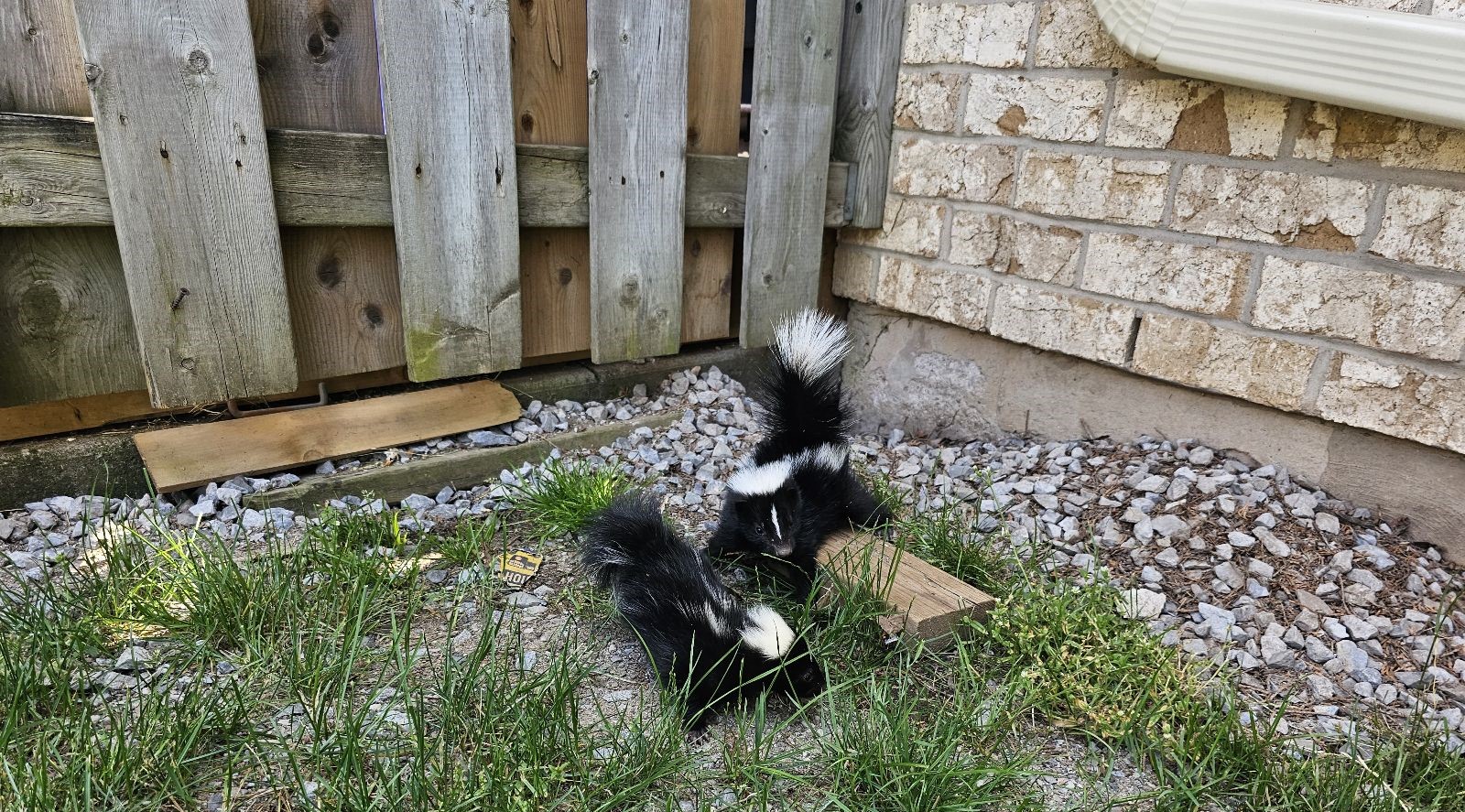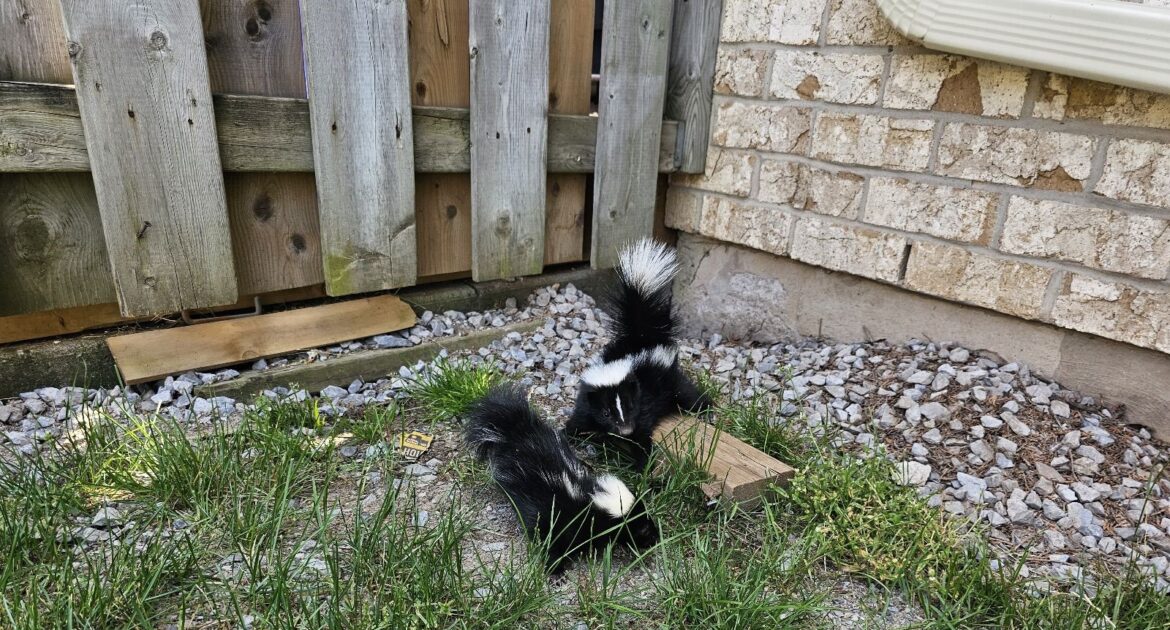When night falls, a stealthy creature often prowls the suburbs, leaving behind a lingering reminder of its presence. With their distinctive black and white stripes, skunks are strikingly recognizable, yet it’s their notorious odour that truly sets them apart.
Few experiences are as unforgettable as encountering a skunk’s spray, a defence mechanism that, while highly effective in the animal kingdom, poses a significant problem for humans. But what makes this smell so intense, and why do skunks smell so bad? The answer lies in the complex cocktail of sulphur-containing chemicals they release, designed to repel predators and leave a lasting impression.
While this smelly assault serves skunks well in fending off threats, city homeowners are left battling its lingering effects, prompting many to seek solutions for wildlife removal. In Toronto, services like Skedaddle Humane Wildlife Control specialize in addressing issues like these, helping residents manage their skunk-related challenges humanely and efficiently.
Throughout this exploration, we will shed light on how many times a skunk can spray, what attracts them to urban properties, and effective strategies for skunk-proofing your home. With a focus on professional and informed approaches, this journey will equip you with the knowledge to enjoy your outdoor spaces without unwelcome surprises.
The Purpose of Skunk Spray as a Defense Mechanism
In the animal world, sometimes a good defence is all you have. Skunks are relatively vulnerable creatures, so they rely on their infamous scent as a primary defence mechanism. Their strong odour acts as a reliable deterrent to would-be predators, signalling that a close encounter might not be worth the risk. The smell is so unpleasant that most animals think twice before engaging with them, making it an effective way to ward off potential threats.
Despite their potent odour, skunks prefer peace over confrontation. They don’t use their spray indiscriminately. Instead, they reserve it for times of genuine threat, as it takes time for their bodies to replenish the supply after use. This means they often give warning signs before resorting to spraying, such as stomping their feet or raising their tails. Understanding these signals can help you avoid being caught in the crossfire.
Chemical Composition of Skunk Spray
The main ingredient in skunk spray is a group of sulphur-based compounds known as thiols. These compounds produce an unmistakably sharp and unpleasant odour. Thiols are common in various natural substances, but the concentration and combination found in this animal’s spray make it particularly noxious.
Thiols aren’t just smelly; they’re also incredibly tenacious. Their unique chemical structure allows them to adhere to surfaces strongly, making the odour difficult to eliminate. Once the spray settles on your clothes, skin, or property, its lingering presence can be a persistent reminder of your encounter. This durability is key to its effectiveness as a defence mechanism.
Long-Lasting Nature of the Smell
Once released, the spray clings stubbornly to whatever it touches. This includes fur, clothing, walls, and even car tires. The molecular makeup of thiols means that simple washing isn’t always enough to eradicate the smell, often requiring specialized cleaning solutions to break the bonds.
Even a small amount of spray can have a significant effect on air quality, both indoors and outdoors. The odour can disperse over a wide area, making it seem as if it’s everywhere at once. This can be especially concerning for homeowners, as the stench can linger in the air and affect the comfort of your living environment.
Reaction with Water
Curiously, the smell of skunk spray can worsen when it comes into contact with water. Moisture can help release additional odor-causing compounds, intensifying the scent rather than diminishing it. This is why the smell can become more pronounced in damp or rainy conditions.
Attempting to wash away the spray with water alone can sometimes exacerbate the problem. Effective removal often requires specific techniques and products that break down the thiol compounds without spreading them further. Knowing how to handle the situation properly can prevent the odour from becoming a long-term nuisance.
Range and Potency of the Spray
These animals have a surprisingly impressive range when it comes to their defence mechanism. They can project their spray up to 10-15 feet, ensuring that potential threats are kept at bay. This range increases the likelihood of affecting nearby people, pets, and property, emphasizing the need for caution when encountering these creatures.
The potency of this animal’s spray is such that it can be detected up to a mile away under certain conditions. This underscores the incredible power of their defence mechanism and explains why it’s so effective at deterring predators.
Impact on Pets and People
The potent nature of certain wildlife defence mechanisms can lead to adverse health effects for pets and humans. Exposure to the pungent substance released by these creatures can result in significant irritation and discomfort.
It’s not just an olfactory challenge; direct contact with the spray can cause severe eye irritation, leading to redness and tearing. In some cases, inhalation of the odour can induce nausea and respiratory discomfort, making it challenging to breathe comfortably.
This lingering odour also clings stubbornly to the fur and skin of pets, adding a level of complexity when considering how to cleanse them of it effectively. Traditional cleaning methods may fall short in removing the stubborn residue, necessitating the use of specialized products designed to break down the compounds causing the smell. A strategic approach involving these solutions can substantially improve the living environment following such an encounter.
Why Skunks Use Their Spray Sparingly
Understanding why these creatures wield their potent defence with such discretion requires a closer look at the resourceful nature of their approach. Contrary to the belief that they freely unleash their olfactory arsenal, these creatures carry a finite supply of the substance, which necessitates careful use for legitimate threats. The time it takes to regenerate this crucial defence underscores their deliberate and judicious deployment.
Despite their ability to repel effectively, avoiding conflict remains their preferred strategy. Rather than resorting to immediate action, they issue a series of warning behaviours like stomping or tail raising, signalling their discomfort and giving ample opportunity for retreat. This deliberate forewarning demonstrates a clear preference for peaceful resolutions, prioritizing coexistence over confrontation.
Humane Solutions for a Skunk-Free Home
For residents seeking a resolution to skunk problems, Skedaddle Humane Wildlife Control in Toronto offers professional, humane solutions to keep these creatures away from urban properties. Their expert approach ensures effective wildlife removal and prevention without harm to the animals.
If you’re facing skunk-related issues or curious about what attracts skunks to your property, don’t hesitate to reach out to Skedaddle Humane Wildlife Control. They provide comprehensive wildlife removal in Toronto and are ready to assist with any wildlife challenges you may encounter.
Contact us to request a quote or to learn more about their services and ensure your outdoor spaces remain free of unwelcome surprises. Remember, understanding how many times a skunk can spray and using effective prevention strategies is key to maintaining a peaceful and skunk-free environment.




